Raph Koster's Blog, page 4
April 15, 2021
Thinking long-term
Another week, another post over on the Playable Worlds website. This time it’s about “engagement” and “retention”: those words which can be boogeymen for those concerned about the business practices of game publishers, but which are also crucial to long-term enjoyment of a game.
The first virtual world I worked on was LegendMUD. It is still running after a quarter-century. My second was Ultima Online. When I go to a UO player gathering, I see three whole generations of families who have played that game for 23 years now: grandparents, parents, and kids. Why?
Because running a game like this, a world like this, a service like this – this is a long-term emotional relationship with the player.
April 9, 2021
Designing for Social Play
Oops, I forgot to post about this yesterday when it went up!
I wrote about designing for social play for the Playable Worlds website. As you can see, I’m doing an article a week for now… that will probably change once we get more folks writing about what we are doing and inch ever closer to an actual reveal of what we are making.
In the end, good social design is about good society design. That’s what underlies the buzzword, and why it’s so sad that the word “social” gets reduced to mindless clicking or dark patterns on a social media site.
Diversity of people and of play makes for a more robust society, a more enduring community, in every way. That’s good for us as a business. More importantly, it’s better for players. It makes for an online world that doesn’t chase you out or make you feel insignificant or unwanted. A world where you can pursue your own dream.
From up close, from where we stand, we cannot see the shape of the whole. My hope is that by playing in a world like this, players come to realize the interconnectedness of all things.
If the ideas discussed there sound of interest to you, and you are a game dev — you might want to check out our jobs page — we’re hiring for a bunch of roles!
April 1, 2021
Player-driven economies
I’ve got a new blog post up on the Playable Worlds site, this time talking about the value of economies driven by players, and what that really means.
This often all gets boiled down to the phrase “a player-driven economy.” And people think it means revenue models and monetization. Maybe, if they are savvier about online worlds, they think it means players make the items that other players play with – and that’s true, they can and do and should! But even that is still a reductionist way to think of it.
A player-driven economy isn’t about the money. It’s about having every way to play the game serve a role in the ecosystem. It’s about all the wonderful and weird ways we choose to live and play, and how we find out that our silly hobbies are vital necessities to someone else.
In the end, it’s about making everyone important. Because we all are. Important. Plumbers, baristas, roleplayers and raiders.
March 25, 2021
The Future of Online Worlds

We are starting to open up a bit about what we are doing here at Playable Worlds!
I am going to tell you that yes, worlds can feel alive, like real places. Places where you can stake out your virtual homestead, and leave your mark in a lasting way. Online worlds can be dynamic, fully persistent, and modifiable by players, and not just unchanging cardboard set pieces an inch deep and monetized a mile wide.
We have the technology: cloud computing power lets us do things with simulation and AI that once seemed impossible. This dream can come true.
To read more, head on over to the Playable Worlds website for the full article!
February 11, 2019
Best practices for community engagement
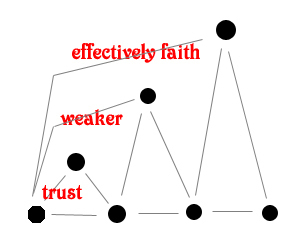
I’ve written endless words on this in the past, but sometimes you just need a cheat sheet. Particularly these days when people who aren’t community professionals find themselves on the front lines out of business necessity or just because of the nature of social media. So here’s just a quick set of advice for those who find themselves speaking to members of their user community.
Always be honest. Honesty and straightforwardness buys goodwill for when you screw up. Lies buy ill will. And screw ups will happen.
You’re always in public. No, 3000 followers on Twitter isn’t private. Nothing on Twitter is private, unless the account is actually locked. No, it’s not fair that your personal Twitter is suddenly a corporate mouthpiece.
Never be angry. If you’re angry, step away. There are viable ways to express displeasure, but they all require sober contemplation.
Ask questions, don’t make arguments. Arguments invite more arguing. Questions encourage discussion between community members, which you can then mine for useful information.
Educate as you go. Sometimes, those discussions will have false premises. You can correct that without starting an argument with your users. All investment in educating your users eventually pays off.
Be human, but stay private. Coming across like a robot is more harmful than helpful. But be very careful about sharing private details of your life.
Budget yourself very carefully. Avoid burnout. Crunch is bad for everyone, but the everyday job is always hard on community people, and the stress can be very high.
Give attention only to that which you want to encourage. Your attention is a precious gift. If you spend it on troublemakers, you’ll just make more of them.
Don’t get a swelled head; eyeballs on you aren’t a measure of your importance to the team.
Cops and cruise directors aren’t the same job. Think carefully about how you organize your community-facing roles. One job is about punishment, the other about building trust. It’s hard to put these on the same person.
Posters aren’t representative of all users, but they’re often influencers. All too often we think of this as all or nothing: either they’re the vocal minority and don’t matter that much, or they are the core userbase. The answer is mixed.
Be wary of scale. Large crowds convey anonymity, which allows the breaking of norms. Neighborhoods make better communities than malls.
Community is proactive, not reactive. It is the act of cultivating a garden; it is culture building. If you just respond to what comes in, you are letting it grow wild. You need to engage in active norm-setting.
“We” is the most important word. When subgroups argue, remind them they share a larger common identity. When they argue with you or the company, remind them you’re all in the same community. (And don’t lie about it, which means actually having the company believe this. If the company doesn’t have this in their culture, a community disaster is bound to happen eventually).
A few helpful links from the past:
“Community Management in the Culture Wars” – a presentation from 2015 that covers topics like the effects of mobbing, diplomatic language, and ways to lock down your social media“A Community Cookbook” (more for players than community managers, but CMs may find things here that they want to help sponsor)“Community relations, management, design, and governance” – a post on why these are not the same thing.
January 30, 2019
What drives retention
For better or worse, much of the games market is moving to games-as-a-service. Once upon a time, this was known as the MMO business model, because all MMOs were games-as-a-service, and virtually nothing else was.
Obviously, a lot of GaaS games won’t be MMOs. Candy Crush Saga is a service, but it’s not an MMO. Nor does GaaS mean the game has to be free to play with upsells via microtransactions. GaaS is a business strategy, and F2P is a revenue model.
In the past we’ve seen services of all sorts drive revenue in lots of ways:
free sampling to get you in the door, supported by other revenue streams such as other paying members subsidizing free users, or advertisinga la carte offerings which let you dip into a service without an ongoing commitmentperiodic upgrade offers to take you from that free tier to something with recurring paymentssubscription tiers — a low basic offering and a few richer ones catered to specific demos, which retain the ability to a la carte for specific features individual one off upsells for special events that are never covered by the sub tier
In fact, cable companies and phone service both do just about all of the above at once. So there’s lots of ways to make money, if you have a service, and arguably, mature service businesses use as many of them as they can.
But underneath it all is one inevitable underlying truth.
There is no ongoing service without retention.
This is why some game genres work better than others as services. If you can figure out how a given genre can retain, then you can make it work for GaaS. Whether or not it works for F2P is a separate, secondary question. And a lot of game types are built to be consumable, snackable, or played very intermittently. By their nature, they will work poorly as the sole anchor for a service (they might work great in the context for a service that has multiple offerings).
Retention boils down to two key measures:
The game holds people a long time — meaning, across sessions.The game is something people want to play again at least once a month.
Even something like a Dungeons and Dragons campaign meets these criteria. Heck, many classic tabletop games meet this criterion, or else people wouldn’t still be playing chess and go.
But an awful lot of games don’t. What we’re talking about is the line between a singular experience and something that can become a hobby, a regular pastime.
What’s the difference, in practical terms? Take two games. They sold or gave away the exact same number of copies; the blue is the cumulative number of users who tried the game. Game A was popular, but for a short period of time; each player lasted a day. Game B retained players; 90% of players stick around to the next day. The revenue potential is the area under the red curve, which is the game’s active users. Game B has access to a lot more passion, a lot more interest, and therefore also a lot more money.
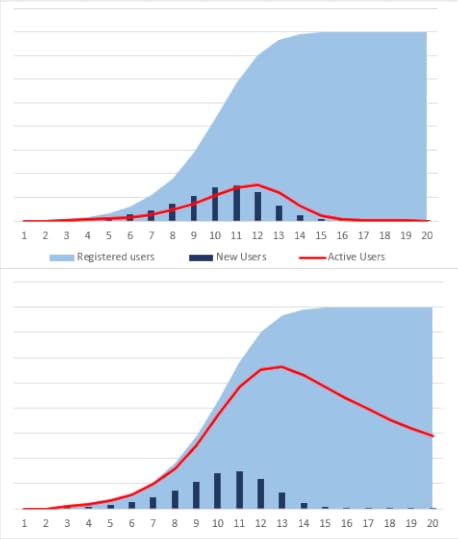 The difference in active users between 100% and 10% churn
The difference in active users between 100% and 10% churnOK, so how?
The following mechanics are proven to drive retention. This is a non-exhaustive list, but covers most of the bases, I think. These are mostly things you do with a game over time, in order to drive people to play it again, or turn it into a hobby.
A steady content trickle
Pro: Consuming content as you move through a system can be very compelling. It could take the form of defeating, collecting, plot advancement or more. It gives a clear aspirational goal for the session, and likely for the next session, and can hold people as long as the content keeps ringing changes on the basic mechanics. Leveraging this is how puzzle games were “saga-fied” and became viable as services. Even blowing up the current game balance and shifting it around can accomplish this (though it’s risky!). Also easily monetized; most F2P games basically rely on constantly offering users more “stuff” without actually changing the game very much.
Con: Expensive. Like, very expensive. Like, people underestimate how expensive. And if you are solely dependent on this and miss an update you can actually lose your audience. Regular updates is best practice nonetheless.
Persistent profile investment
Pro: A familiar approach that is easy to implement, usually via RPG-style mechanics. Even piling likes into a profile counts here; it’s basically about having a persistent profile that accrues over time. Leaving would mean the loss of the accrued value, and more importantly, the standing in a community.
Con: Works best if there’s a community to display the profile to, which you then have to build and run. Also, you tend to add new content at the top, which can alienate new players, gradually over time, via a host of mechanics ranging from mudflation to game overcomplexity. Lastly, real community prominence is more valuable than the level number proxy you give it; if the player can move to another setting and retain that prominence, this may not serve as a retaining anchor.
In-world investment (building, housing, etc)
Pro: This is what save games in building games do. Unlike character investment which can be sort of portable, this can never leave the game. It is also even more powerful if collaboratively built, because it then implies also building a set of social ties. It also serves as an outlet for a couple of other methods listed below.
Con: Expensive to design and implement, data-intensive to store, and it introduces a host of design challenges around space, public display, and more.
Social connections, such as teams, guilds, etc
Pro: Social groups are the primary glue in games in general. Even single-player games have huge social characteristics to them around widely shared experiences and common ground. Social ties introduce a host of extremely powerful things like mutual obligation, economic exchange, group identity, and so on (see my old talk on social mechanics for tons more). Looser connections and community can often work better than a tight-knit community.
Con: Guilds often migrate games as a whole, so you want your user tied to the community via multiple touch points that aren’t in the same guild. Social connections also bring drama, which means community management, moderation, and much more. There’s a vast amount of expertise involved in engaging in governance here, and even though this is arguably the most powerful tool in the arsenal, it’s also very challenging and causes burnout in staff on a regular basis.
Economic play and arbitrage
Pro: This might happen with real money, or it might happen with play money. The profit motive is incredibly powerful and will keep players engaging in your experience well past the point of actual enjoyment. Regardless of whether it’s real or fake money, though, the fact that it is effectively a self-generating set of ongoing challenges means that it’s a substitute for content. The game keeps refreshing itself in somewhat unpredictable ways.
Con: If using real money, it can quickly chase out more playful ways of engaging. Either way, it requires a robust set of systems that enable trade, sales, and so on, and dynamic virtual economies are much harder to design and balance than static ones.
Extreme game depth
Pro: This is of course the classic method used by chess and go, but also games like StarCraft. A game that has enough depth and complexity to it that players continually see new heuristics ahead, new ways to improve, and effectively never see the game as boring, is in many ways the Holy Grail of game design, particularly when paired with multiple ways to play (variants, restarting with alts, classes, speedruns… lots of ways to do this). A rule of thumb I have used for over a decade is “it’s a good sign if your game merits a player-written strategy wiki.”
Con: Are you a good enough game designer? Few are, frankly; this can feel like capturing lightning in a bottle. Also, be aware that high skill ceiling often doesn’t play well with accessibility.
Player vs player competition
Pro: Other players are a free source of depth. This has also been a default tactic for literally centuries, so much so that it has merited being called the “orthogame,” almost the default historical format.
Con: Watch out for zero-sum play (one winner, one loser) causing players to be chased out. The typical user loses more often than they win, because the most skillful players tend to take up a disproportionate number of the wins. The result is that historically, most services based solely around this managed to only get 1/10th of the population of services based on cumulative character mechanics like RPGs. Today we’re seeing a melding of competitive play with other items on this list, such as content trickle, which hugely ameliorate this. There’s also the current common tactic of offering the game as a non-service and having a service only for the higher echelons of players.
User creativity
Pro: It can be in various forms. It can also be surprisingly cheap to build. Extra powerful if it can be monetized by the player, but powerful even if not, as long as user creativity has a publicity channel that garners audience.
Con: It can also be crazy expensive to build if you’re not careful. Also, creativity depends on audience to a very large extent, so you must have infrastructure to support sharing, showcasing, and so on, in order to drive the social proof and the acclamation that are underlying motivations to engage in the behavior. Because of this, creativity often works best when in the setting of a social network that valorizes it.
Story
Pro: The retention tactic of the soap opera: emotional engagement (typically with characters, not plot or setting) via ongoing narrative. Fortunately, writing, though hard, is also an ancient discipline and the expertise is out there to do this, is games can only be persuaded to leverage it. This also gains leverage when combined with community: if deep enough via lore, easter eggs, and pockets to explore, it can be strongly retentive. Can also play well with regular content trickle; in fact, the classic MMO expansion was both a content dump and plot advancement. Today seasons are a modern equivalent.
Con: It has similar issues to content trickle (which should be defined as consumable gameplay or content, as opposed to narrative). Characters can be hard to shoehorn into a lot of game genres. Just don’t rely solely on episodic unless you are positive you can hit a release cadence, because when the story arc ends, often so does your retention.
Emergent play
Pro: arises out of systemic depth, simulation, etc, and usually interacts with game breadth as opposed to depth. Don’t think having one chess system; think having many smaller systems that are individually not as deep but which interact with one another in surprising ways. It can be surprisingly cheap to implement a system like this.
Con: It can also be brutally hard, particularly to balance, and only some designers seem to have a knack for it. It can lead to enormous community outcries, and your game moving in totally unexpected directions.
In the end
Many of these play with each other very powerfully, but can also exist independently. Like, if you have rich sim, players will create emergent content, which then you can turn around and leverage into your broadcast narrative, and tie content releases to. Emergence tied to a shifting economy and creativity leads to rich places. And so on.
Once you have retention, you can worry about how to make money. If you can’t make money from a userbase that has decided to make your game into a lifestyle choice, well, you’re not trying. Again, it doesn’t imply a particular business model: a service-based game is not a dirty word, doesn’t mandate constant moneygrubbing, doesn’t mean it has to be free to play. It just means that you the developer and you the player are in it for the long haul.
November 13, 2018
Mailbag: Parts of an MMO

Hello Mr. Koster! I have a school project that requires the input of an expert like yourself. I know you usually don’t reply to students, but hopefully you’ll reply to me. I am currently working on the concept for a open-world MMO and wondering if you can help me out. I know your major works are Star Wars Galaxies and the Ultima series, but my game is still a MMO. It’s just more like DC Universe Online. Basically, I’d just like to know what major things should be included in MMos and Open-World games. Do you have any knowledge that might help?
I spent about an hour doing a quickie list off the top of my head. It’s not exhaustive, just stuff that occurred to me as I ran down a mental checklist. I know it’s not exhaustive because in past years when I’ve done similar outlines (which I can’t lay hands on now) they were twice as long.
But maybe this will be helpful, and convey some sense of the scale of what you need to worry about. Important note: I didn’t even get to the stuff that only lives on the client. This is only the stuff that lives on the game server side.
You might want to look at Insubstantial Pageants, a book I started and never finished on MMO design, and of course Dr Richard Bartle’s Designing Virtual Worlds[affiliate link] has an exhaustive amount of material on the subject.
Persistence database for storing state
Player persistence
World state (if needed)
Analysis tools
Reversion/correction tools
DB cleanup tools/game design
Template database for storing source data
Objects
Creatures
Other forms of content
Version control
Statistical analysis tools
Networking
Network traffic culling system
Vis/invis
Distance
Per user
Notability/importance
Connection manager
Link loss, reconnection
Encryption
Verification and security, including flood control etc
User multiplexing (“user server”)
Server cluster management
Commerce system/shop
Credit card and prepay card support
Refunds
Fraud handling
Shop backend
Metrics
Community support
Forums
Community tools
Event tools
Metrics system
Dashboards
Pre-made
User-definable
Logs
Account activity
Network activity
Commerce activity
User activity
Gameplay events/balance
Alert/pager system
Server simulation
Event handler, manager, dispatcher
Recursion limits/loop trapping/performance monitoring
Spatial simulation
Terrain system
Tile/heightfield/mesh
Pathing map
Region system
Room system
Exits
Mirroring
Instancing
Coordinate system
Cross-server handoffs
Player load balancing
Physics
Collision
Forces
AI support
Range-based triggers
Event-based triggers
Instantiation/destruction triggers
Alternate simulation layers
Time-based
Weather
Day/night
Influence maps for AI
Cellular automata
Resource maps for harvesting/crafting
Players
Identity profile
Account
Name/pw/etc
Source/geolocation
Join date
Commerce info (credit card, etc)
RMT currency
Content access/service tiers (e.g. expansions active, etc)
CS history
Characters
Basics
Name(s)
Race/species
Class
Group affiliations
Guild, towns, etc
PvP status/flags
Statistics
Game stats
UI preferences
Keymappings
Screen layout
Macros/bindings/custom UI
Temporary affects
Blind, dizzy, stunned, etc
Position
Lost link/connected
Skills/powers
Skills
Levels
Currencies
XP
Game money
Character cosmetic customization
Hair
Skin
Morph targets/faces/etc
Inventories
Physical
System (grid, capacity, weight)
Limits
Nesting/abuse caps
Binding
Paperdoll
Friends lists
Achievements/badges
Skills/powers
Macros
In-world ownerships
Houses
Vehicles
Shops
Pets
Metrics
Play frequency
Session length
Logs
Intangibles/non-game affecting
Description
Matchmaking
etc
Social structures
Chat
Abuse prevention
Word filter
Circular buffer and reporting
DDOS/spamming
Muting
Blocking
Chat window
Logging
Filtering/tabs
Color coding
In-world
Chat bubbles
Visible signals
Translation service
Channel system
Join
Leave
Kick
Create
Destroy
Q&A system
Mod queue
Submit
Approve/deny
Mod status
Guilds
Identity
Name
Abbreviation
Heraldry/visuals
Membership
Join
Leave
Kick
Powers structure
Delegation
Tiers
Change of leader
Shared inventories
Banks
Enemy guilds/PvP flagging
Shared ownership of structures
Friends
Location notification
Alerts
Grouping
HUD management
Join/leave/kick
Disconnection and distance handling
Group chat
Matchmaking systems
XP/loot management
Emotes and socials
Textual pre-written
No target
Self target
Other target
Animated
Solo
Tandem
Consent system
Chat parsing for play
Eye/head tracking for recent chats
Moods
Text communication
Say
Alternates
Tell
Whisper
Emote
Voice communication
Customer service support
Live paging
CRM database
Ticket system
Power tiers
Escalation and management process
QC subsampling
Logging
Metrics
Objects
Object types
Flags (stream/not, pick up, etc)
Inheritance structure
Affect system
Structures
Ownership
Access
Instancing
Vehicles
Physics
Controls
Ownership
Storage/retrieval
Multi-user
Interactables
Event triggers
Dynamic light attachment
Dynamic sound attachment
Animation
Serverside UI definition
Stackables/fungibles
Usables
Weapons
Projectile
Melee
Wearables
Clothing
Armor
Consumables
Food/drink
Potions/wands/etc
Creatures
Statistics
Affects
Stats
Hatreds/friendships
Ranges
Balancing tools/metrics
Spawning
Point
Region
Timer-based
Population-based
AI
Grouping
Factions, hatreds, etc
Powers
Conversation system
Wandering, patrolling, etc
Movement speeds
Pathing parameters
Simulation map usage (influence, resource, etc)
Shopkeepers
Buying price estimator routines
Stock maintenance/spawning
Interface
Metrics
Scripting
Quest system
Templated data
Conversations/flagging
Maps/NPC tagging
Arbitrary
Queuing, deque, priority, fallthrough
Event handlers
Collision and range
Timer
Player interaction
Physics
Spawn/destroy
Messages
API
Statistics
UI
Sound
Effects
Messaging
Combat
Spawning
Etc (basically, every system)
Game systems
Combat system
PvP handling
Event ownership
Object ownership
Guilds
Duels
Region-based
Flagging systems
UI
Core system
States
Affects
Ranges
Line of sight
Balance logging
Advancement system
Skills
Data
Prerequisite tables
Levels
Data
Points accrual system(s)
Reputation systems
Crafting system
Locating resources
Harvesting
Real time
Asynchronous farming
Refining
Combining
Templates
Recipe book and interface
Unlock mechanism
Experimenting and customization
Mass production
Maker’s marks
Repair and damage system
Housing system
Access permissions
Kick/ban/etc controls
Lockdown and decoration
Transfer
Rent or expiration or other sprawl control
Travel system
Teleport or transit points
Bookmarking
Other possible systems
Pets/hirelings
Magic
Politics
Territory
Exploration
Player shops
Events
Async behaviors (mining, manufacturing, farming, etc)
Feeds in and out of game
Tutorial
September 12, 2018
Micael Priest

Portrait of Micael Priest by Sam Yeates
Really broken up over the news that Micael Priest has passed away. Such a sweet man, so ridiculously talented and totally a symbol of an Austin that has faded away.
He did the early art — like, most of it in the early days before we had an art team — for Ultima Online. He was a famed poster artist for Armadillo World Headquarters, rendering inked versions of Zappa and Willie Nelson and countless others in a detailed, hatched and stippled, bold cartoon style.
He was colorblind — I still remember when he thanked us for letting him know that he had made green people for UO by accident. I remember when he defended us during the run up to alpha, when Richard came to complain about the artwork in the game that Kristen and I had put in as placeholders until we got the real work, and Micael said “it’s not programmer art… it’s designer art! So it’s better!” I also remember walking into his office one day and being surprised by the presence of Peter Yarrow (of Peter, Paul, and Mary fame); I fled in the presence of one of my heroes, and he told me after, “you should have stayed, I’d have introduced you!”
I thought of him often, but we had lost touch, because I am lousy at staying in touch with people. He wasn’t active online, and these days notifications are what passes for friendships. During UO crunch we all lived in each other’s pockets for months on end, and then… distance, and time.
It’s hard to imagine such a vital presence gone, but he leaves behind so much work, such a stamp on Austin culture. There was even a Micael Priest Day declared by the mayor, long ago.
Today also comes the news that Threadgill’s World Headquarters is closing; Micael’s art hangs all over the walls. Everything becomes ephemera, I suppose, to be auctioned off. We are left with the memories of smiles and warmth, of talent, and the unmistakable twinkle in his eyes.
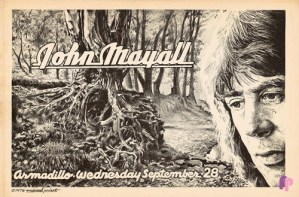

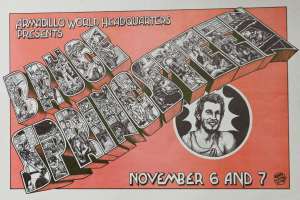

July 13, 2018
GameCamp and Tabletop talks now up
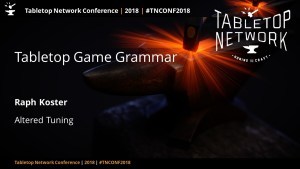 I have posted up the two talks I delivered last month. Sorry for the delay, but I caught something while at the first event, and have only shaken it right around… now, believe it or not. Four weeks of intermittent fever, coughing vehemently, and generally feeling unable to do much of anything.
I have posted up the two talks I delivered last month. Sorry for the delay, but I caught something while at the first event, and have only shaken it right around… now, believe it or not. Four weeks of intermittent fever, coughing vehemently, and generally feeling unable to do much of anything.
One, entitled “Tabletop Game Grammar,” was a talk at the inaugural Tabletop Network event, a game design conference centered specifically on tabletop games. It was held at the lovely Snowbird ski resort, at a high elevation (we went up to the peak after the event, it was around 11,000ft high). This talk is centered on applications of game grammar to boardgame design, including a working through of how the addition of new resources creates the different variants of poker.
I had a great time at this conference. I don’t really attend boardgame events other than local design workshops and the occasional local UnPub event, and I lack a regular gaming group here at home. I also don’t play a hundred games a year, like many of my friends do — they all seem to have a far wider range of references than I do when discussing boardgame design! But I’ve been doing a lot of tabletop design over the past few years, and finding that many of the lessons from the game grammar work and from years of doing videogame design definitely apply across the boundary. I took several prototypes with me, and now have hopes that some of them may actually be published someday. It was great to make new friends such as Isaac Shalev, designer of Seikatsu among other games (he had a great prototype of a game about running a tour bus company in Israel), and to catch up with old friends such as Jose Zagal, Jeff Ward, Geoff Engelstein, Soren Johnson, Scott Rogers (who had a new game out!, and of course the organizer of it all, Tim Fowers.
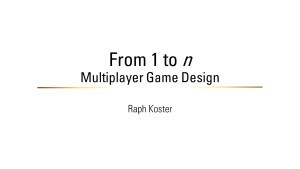 I was at home for about three days, then departed for France! It was my first time there, and I got to spend a lovely day and a half walking all over Paris (around 12 miles in a day… I kept humming this song under my breath the whole time). Then it was off to Lille to give a keynote at GameCamp.fr titled “From 1 to n: Multiplayer Game Design.” This talk was an overview of multiplayer game design patterns, mashing up material from my older talks on social mechanics and the newer work on the Trust Spectrum.
I was at home for about three days, then departed for France! It was my first time there, and I got to spend a lovely day and a half walking all over Paris (around 12 miles in a day… I kept humming this song under my breath the whole time). Then it was off to Lille to give a keynote at GameCamp.fr titled “From 1 to n: Multiplayer Game Design.” This talk was an overview of multiplayer game design patterns, mashing up material from my older talks on social mechanics and the newer work on the Trust Spectrum.
My old friend Thomas Bidaux was there too, and helped me navigate far more French than I was quite comfortable with. I actually did give an opening paragraph of my talk in French, but I am incredibly rusty and have lost most of my vocabulary (though apparently my accent is still decent). I got to hang out a bit with Noah Falstein and Cassandra Khaw, but illness kept me from doing quite as much as I had hoped.
It’s really unfortunate that the tradeoff for all this wonderful travel was a month of illness. 
June 26, 2018
POSTMORTEMS is out
 My new book Postmortems is now shipping. If you pre-ordered the Kindle version, it should be there for reading now.
My new book Postmortems is now shipping. If you pre-ordered the Kindle version, it should be there for reading now.
You should be able to get it from pretty much any bookstore. I get a little bit extra if you order it through this link on Amazon:
Paperback
Kindle
It’s a hefty 700 pages. Early reviews are pretty flattering, and make me happy; I am looking forward to seeing what readers think! If you read it, please leave a review on Amazon; they matter a lot.
Also, if you are an academic who might be interested in using the book in your classes, reach out to the publisher here to request a review copy.
Here’s a sampling of press reviews, in case you aren’t sold on it yet:
Playing is nice but sinking into a good book is wonderful too, and if that book goes into detail on the history of gaming then that’s even better. There’s so much happening today, all of it moving so quickly, that it’s easy to neglect where it came from and the lessons that the past have for the future… Postmortems is a collection of writing both old and new documenting the evolution of design in multiplayer gaming, from text adventure to cutting-edge tech. The challenges didn’t just come from online gaming growing into a dominant force, but also from increased expectations and the shifting priorities of switching from dedicated fans to a more general audience… [I] have been enjoying its look into a major aspect of gaming history and the many personal stories that illustrate it. This is the first of three volumes and the series is shaping up to be vital reading for anyone with an interest in knowing how games of any sort come about.
Raph Koster has a lot to say about making online games, as he’s been working on them for more than two decades. His new book, Postmortems, debuts on Monday at more than 700 pages… The result is an inspiring historical look back at the development of virtual worlds. He looks at whether our online bonds are real, offers a detailed design breakdown of Ultima Online’s world simulation, examines what went wrong with Star Wars Galaxies, and challenges the game development community to pursue art… Part of his wisdom: You can’t really skip the learning part. You have to get your hands dirty and do it even if other people think that you’re wasting your time.
Presented as an anthology of work, it collects some previously published material and publishes it alongside fresh analysis and introspection into some of the key design decisions made, and why they ultimately succeeded or failed in their goals. The result a book that’s part chronological record, part critical autobiography… there’s also the start of a much longer and wider philosophical battle between player freedom and character immersion on one hand, and player restrictions for character safety on the other. In later chapters this point becomes increasingly complex and multi-faceted, as Koster strives to strike a balance between systems that can support deep or emergent gameplay, and ones which fit into the server storage and support limits of the time… It’s sobering to realise that some of the same sociological and psychological problems being faced by MMOs and their developers today were first identified in MUDs some 25 years ago, and still remain as open challenges… Ultimately, Koster’s Postmortems is a valuable compendium of insight and essays that has significant value for both developers and genre enthusiasts… Intentionally or otherwise, Koster gives form to the unicorn that so many of us have been chasing for a decade or more, and which always seems just out of reach.
..it’s massive, folks: over 700 pages spanning three decades and the majority of the online games Koster’s worked on during his long tenure in the gaming industry… the chapters wind their way through some of the most interesting and significant moments of the game’s development and everything he and his team learned along the way. ..Easily the most amusing – and horrifyingly frustrating – chapters of Koster’s Ultima Online reminiscing revolve around the game’s infamous early PvP mechanics… for every attempt to curb the PKs the devs put in, the reds invented some fresh hell for their victims, exploiting every ruleset change. It’s hard not to chuckle as Koster rattles off each new idea and how the players thwarted it (especially when I remember it happening!).
If you spot any others, let me know!



